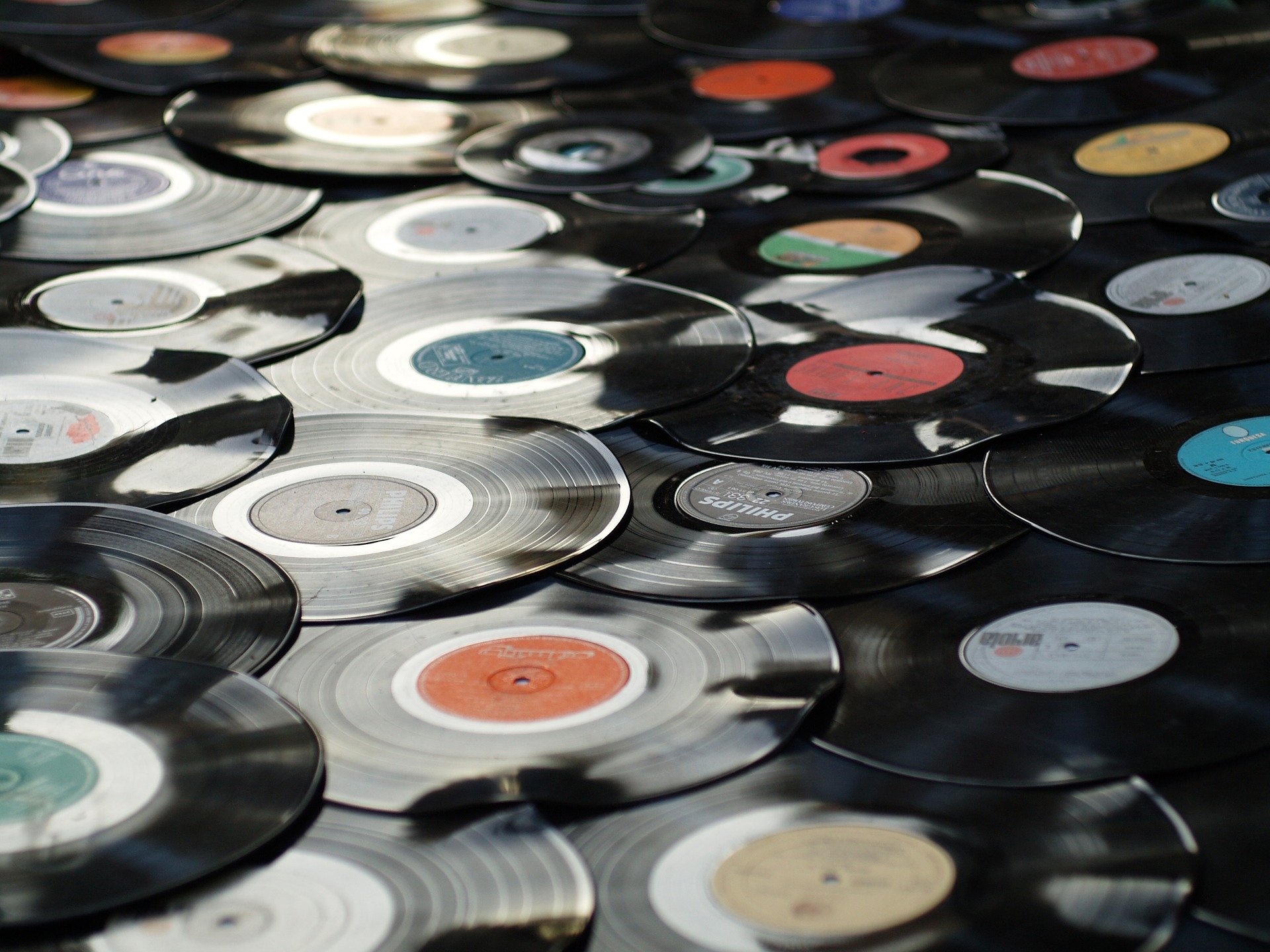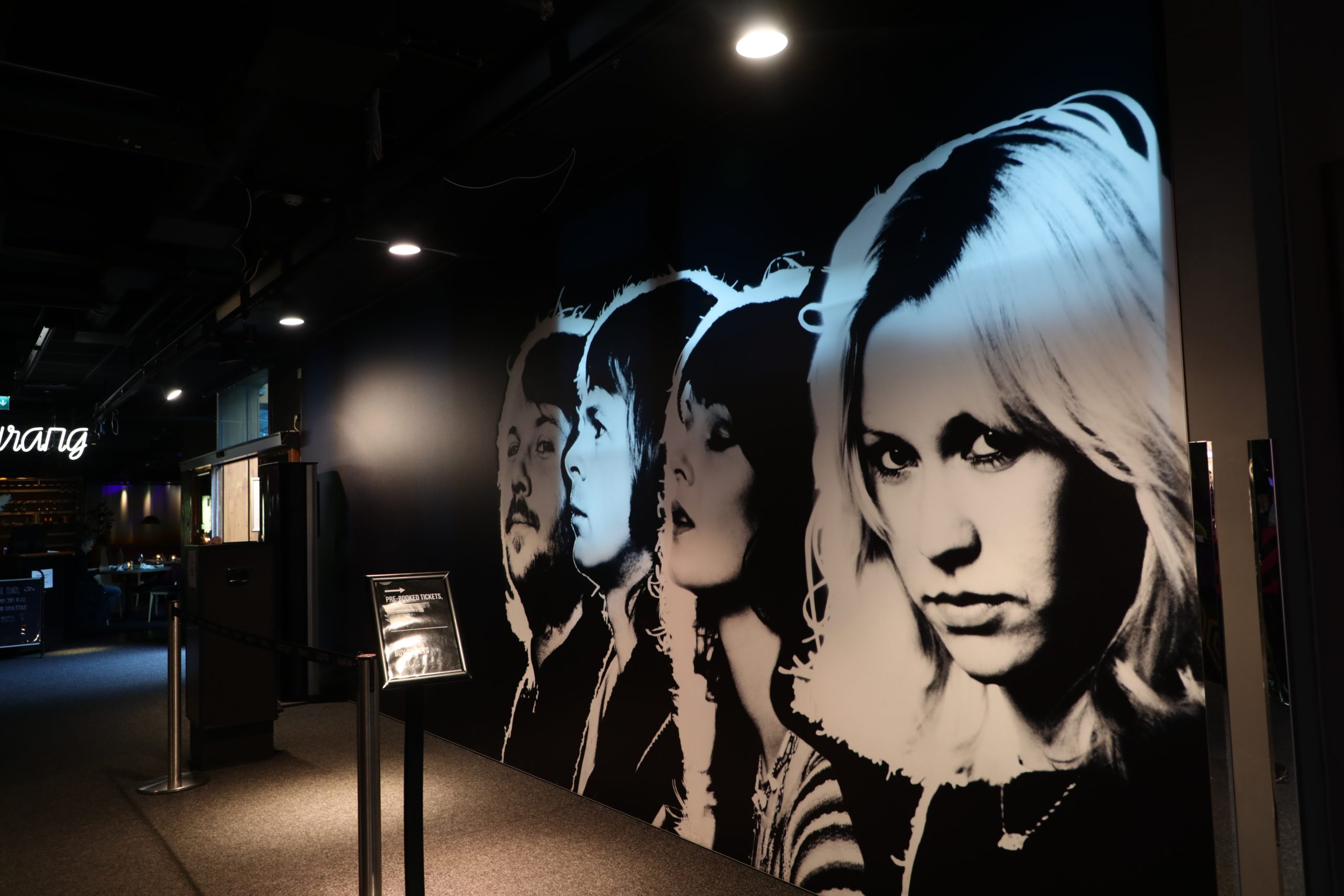
In just one month, Paul and I will be off to CES 2022 in Las Vegas. Joining us will be two groups of excited radio broadcasters, eager to see the future. Hopefully, none of them will read today’s post. Because while you may believe that virtual reality, autonomous cars, and robots are coming sooner than we think, there is new evidence to the contrary.
In fact, three very old gadgets and media – long considered obsolete – aren’t just making comebacks. They are re-emerging this holiday season, causing double-takes in the tech world. Fortunately, yours truly is both a student of “what’s next,” but also the history of how we got here.
But not all technology is marching backwards. In fact, one of our big news stories to wrap up the week involves how AI can produce the perfect DJ.
So, let’s jump into the fray, and discover why our pasts are once again becoming our present. And why the future’s so loud, we’ll have to wear noise-cancelling headphones.
Yes, there’s a vinyl shortage – Music Business Worldwide columnist Eamonn Forde has some good news and bad news for the record industry and the vinyl comeback. The margins on vinyl records are massive, and more and more consumers are buying and collecting record albums.
But the reality this year is that vinyl pressing plants can’t keep up with this demand. According to Forde, labels are learning a hard truth – their vinyl orders should be placed 6-12 months in advance.
And megawatt stars are making it worse for artists well down the pyramid. ABBA, Ed Sheeran, and Adele are sucking so much vinyl out of the system there’s little room for the rest of the field. Forde reports that in its first week, ABBA’s new “Voyage” album – outsold the rest of the top 40 albums in the UK combined.
there’s little room for the rest of the field. Forde reports that in its first week, ABBA’s new “Voyage” album – outsold the rest of the top 40 albums in the UK combined.
Of the 204,000 ABBA albums sold in its first seven days, more than 10% were vinyl. That made “Voyage” the fastest-selling vinyl release of this century.
Digital Music News reminds us that vinyl has been growing in consecutive years for nearly two decades. T0 make up for the vinyl shortage, fans are being encouraged to buy CDs and cassettes. In fact, Discogs now lists more than one million cassette tapes for sale in 2021, up sharply from the year before.
Now hear this: wired headphones may be making a comeback. As we know from this year’s Techsurvey, “hearables” – wireless, Bluetooth headphones and earbuds – are growing by leaps and bounds. In our 2021 survey from last January/February, nearly half (46%) of our core radio listeners tell us they own these wireless devices, considerably higher than the previous year.
So as unlikely as it may seem, there are signs that wired headphones could be coming back into fashion. Dylan Smith from Digital Music News reports this retro trend is being driven by the high price tags on items like Apple’s AirPods. Last quarter, “wearables” (including AirPods) generated nearly 9 billion dollars in sales.
fashion. Dylan Smith from Digital Music News reports this retro trend is being driven by the high price tags on items like Apple’s AirPods. Last quarter, “wearables” (including AirPods) generated nearly 9 billion dollars in sales.
Not everyone is on board. The Wall Street Journal reports that several social media commentators are talking about a move back to wired headphones, led by “unofficial endorsements” from celebrities sporting these old school listening devices.
Of course, they’re considerably cheaper than wireless earbuds, and they don’t have to be recharged. Some say they also make their users appear to be busy, so they are less likely than AirPod wearers to be approached or bothered.
Just in time for the holidays – catalogues. No one could have seen this one coming. Thanks to overloaded email boxes, spam, and other reliability issues, many retailers are returning to print catalogues.
According to Retail Dive’s Caroline Johnson, Walmart and Amazon (yes, you read that right) created kids’ catalogs this year. Many home brands have followed suit, while Lowe’s has printed a debut “toy” catalog for professional customers, while Sam’s Club is also turning to print this season.
Some analysts say catalogs are more likely to fuel product discovery over online shopping. The story quotes Chad Luck, senior director at Alvarez & Marasal:
Marasal:
“The internet largely is an unorganized mess. It serves very well when a customer knows what they’re looking for, but not as much for general browsing.”
Polly Wong, head of Belardi Wong, says Facebook has gotten more expensive (“skyrocketing”) and more of her clients are reporting “underperformance.” Hence, the catalog.
This is crunch time for retailers, and an important key to sales success starts with gaining customer attention. Fans of catalogs say that compared to those thousands of emails we delete, catalogs stand out.
My favorite DJ. It had to happen. Science has finally created the perfect air personality – one that has a great voice, charm, and presence. And who does whatever you tell him to do.

The story hit my inbox last night like a ton of cyber bricks, from two different JacoBLOG readers – Seth Resler and Dave Beasing – both of whom obviously sympathize with this grizzled former programmer.
Reuters reports the PD dream has finally come true. It’s the bionic DJ. Seattle startup WellSaid Labs has refined the AI to produce a human-sounding voice where the user (PD) need only type in breaks, commercials, and teases, and the technology does the rest.
The demo voice it rolled is called ANDY, and for those of us who have spent any time working on the SoCal radio dial, the AI robot DJ is none other than Andy Chanley. Andy is one of my favorite DJs of all time – we worked together at both The Sound (KSWD), and later at KCSN in Northridge.
Andy is one of 50 avatar voices WellSaid Labs has aggregated for all types of business, industrial, and perhaps on-the-air applications.
You can watch Andy – that is, ANDY – at work in this Reuters video.
And you can check out other WellSaid voice avatars here.
Text-to-speech has been around for a long time, but this is the best voice replication technology I’ve heard yet. I originally wrote about “Denise,” one of the early AI DJs more than a decade ago – “Oh, Denise” – technology introduced by Dominique Garcia.
WellSaid Labs may be onto something here. As Dave Beasing – Andy’s former program director – reminded me, “I’ve been trying to get him to say what I wrote for years. This is so cool!”
And indeed it is. But AI technology will never be able to replace the encyclopedia mind of Andy Chanley, and his vast knowledge of music.
It will also never replace his heart. Those of you who have had the honor to work with Andy know that he is truly in a class by himself.
The three “back to the future” stories should remind us that when mass trends skew one way, there is always opportunity in going in the opposite direction. But the Andy Chanley “robot DJ” story is a reminder that as Yankees great Yogi Berra famously said, “The future ain’t what it used to be.”
We’re not dissuaded. Our first CES tour is sold out, and our second tour has just three slots left. Info and registration here.
- Media And Technology In 2025: Believe It Or Not! - April 18, 2025
- In Radio, You Just Never Know - April 17, 2025
- The Secret To Making A Great Podcast (And Great Radio) - April 16, 2025




We partnered with a company in the UK and did an AI experiment with one of our news voices doing newscasts on Alexa for Atlanta. It was pretty much the same process talked about in the video above. What we found: You are always having to add words to the lexicon (data base of words) Omicron would be the latest. Proper names will come and go, and cause issues. Mood was a challenge to get right, especially on the fly. It was hard to type a serious story, then a light story and then have to adjust the mood. That involved SSML coding, and that took time. Net bottom line, at this time, it is easier and more cost efficient to do it live. Here is a link if you want to hear the last one we did
https://download.virtualnewscenter.com/echo/atlanta.mp3
Nothing about AI voice technology gives me comfort. I would think Andy wouldn’t want his voice associated with whatever someone he doesn’t know types into a computer screen for “him” to say. Oh well. It was just a matter of time. Maybe real DJ’s will be the vinyl and wired headphones of the future. A small number of people will still prefer them for their authenticity, reliability, and better sound.
Paul, I’m squeamish, too. See my response to Uncle Lalo. I’m hoping more than a small number of purists – and enthusiasts – will continue to find comfort, companionship, humor, and empathy from a real live voice.
I guess at some point we will be able to drive from coast to coast hearing the same handful of stellar voices on dozens of different radio stations. It’s almost that bad now with all the syndicated s-s-s-s-s-stuff—I mean programming being aired on contemporary robot – I mean cost-effectively automated stations. Someone has to type in the script, so it is effectively canned and unresponsive to current events in real time. Unless you have some witty intern chained to the keyboard in useful servitude. Locally. (Barring some really cool new developments in AI, I’m sure.) I’m going out on a limb here: It’ll be a wonderful fad for a time. Everybody’s gonna get one, and a few upgrades, too. Eventually people with a molecule of discernment and self-respect will seek something more like real life. And then we will have the great renaissance of old expired tech/methods…. So what do you do with, like, Howard Stern, for instance?
Lalo, another example (like cloning) where technology is like a runaway train. We can’t stop it even though we may feel the results are uncomfortable or even immoral. The fact the example in the Reuter’s story is a guy I’ve known, listened to, and worked with for years makes it even weirder. Andy is one of the most brilliant, clever personalities I’ve had the honor of being associated with. Doing an aircheck with him is not easy. He challenges you, pushes back, and does it in a way you respect because it comes from intelligence and truly caring about his craft.
ANDY is none of those things, an empty shell of an electronic reader that is nothing without the brains, wit, and charm of a human. And even then, it’s no substitute for the “real Andy Chanley.”
For commercial work (mindless reads), there’s probably something here. (Voice people had better price their ASS – AI Services – appropriately. I also think really mediocre radio stations could get away with these robots “behind the mic.” (But those stations may not be around too many more years either.)
I would also invite you to read Joel Dearing’s comment above. Thanks, Lalo, for taking the time.